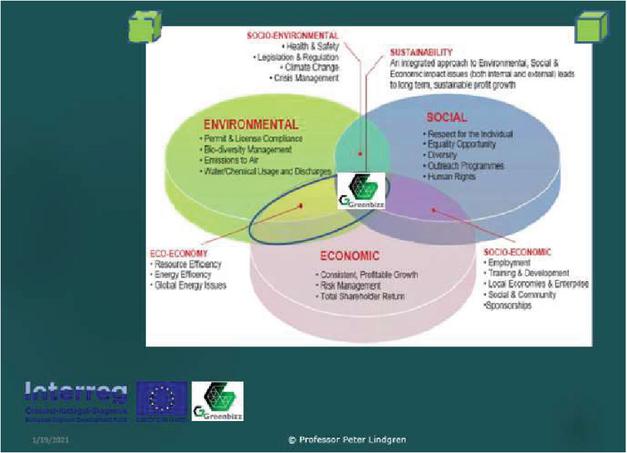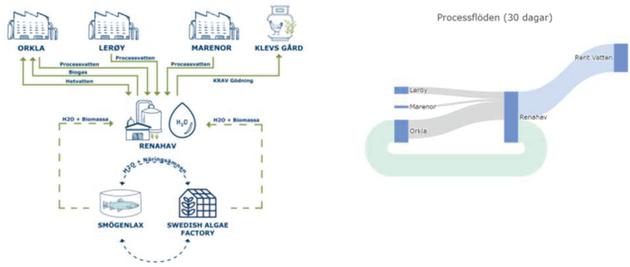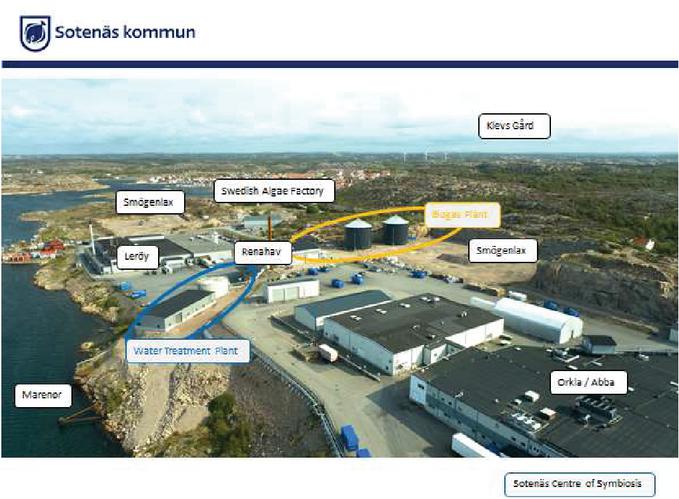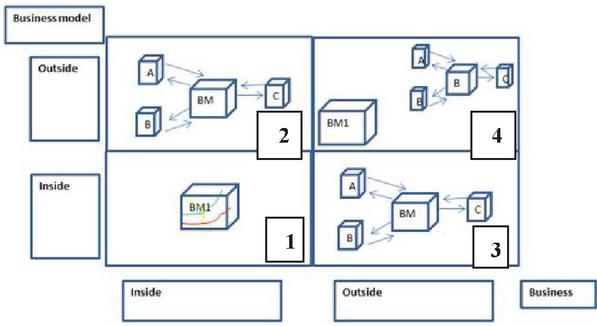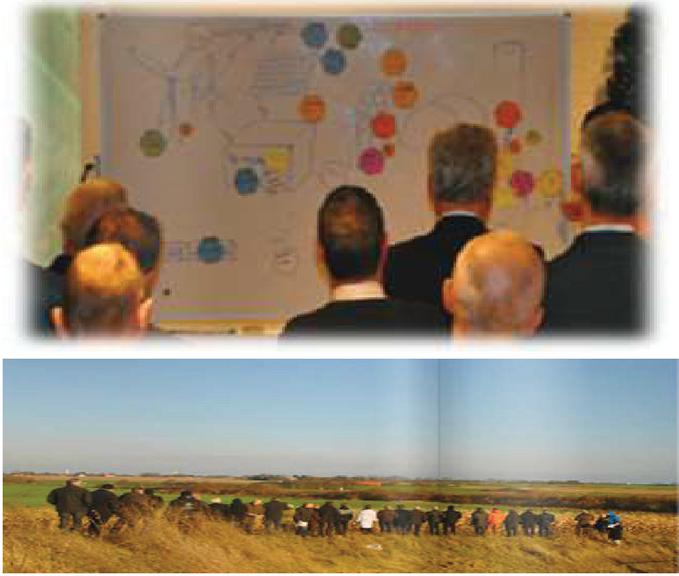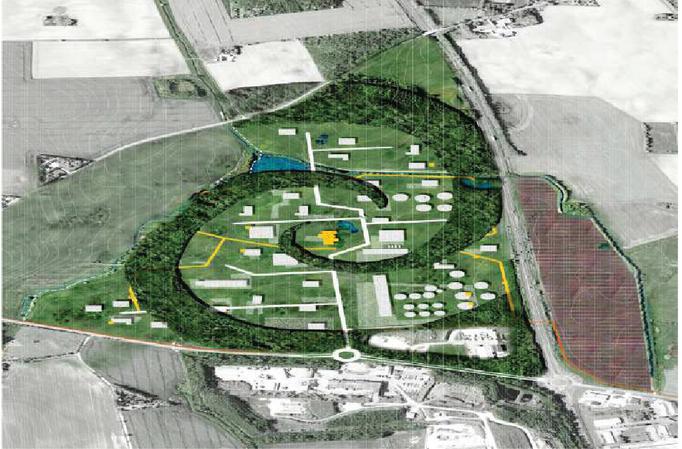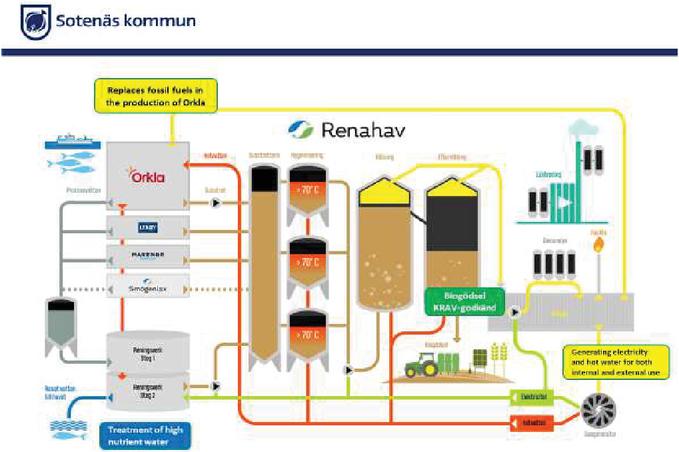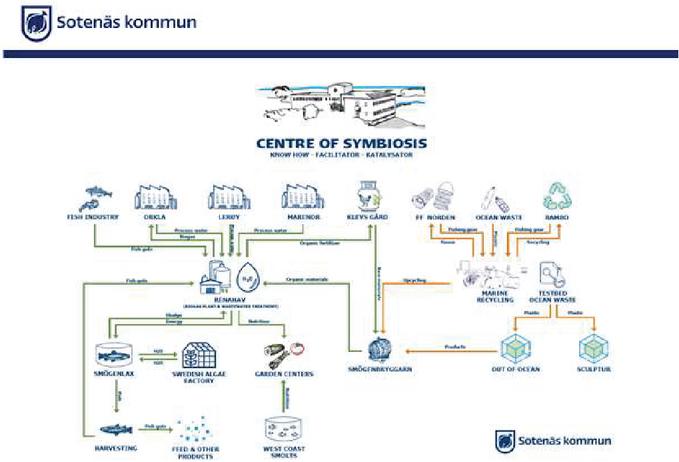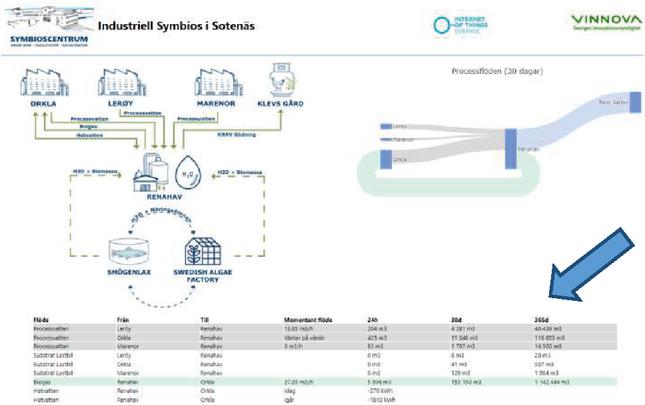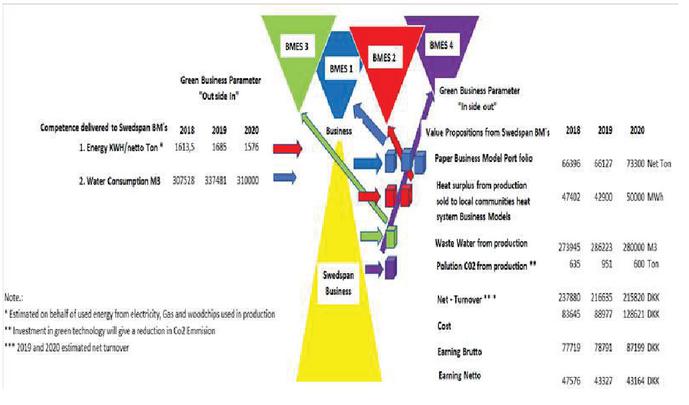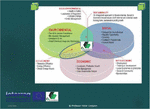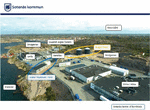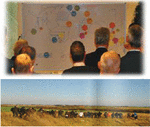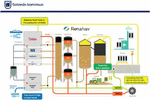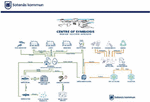Green Business Model Innovation in Symbiosis Business Value Networks: Bridging Green Business Model Innovation to Different Green Symbiosis Business Value Networks with Future Wireless Technologies
Peter Lindgren1,* and Emma Ek2
1CGC – Aarhus University, Aarhus University, Aarhus, Denmark
2Sotenäs Centre of Symbiosis, Sotenäs Municipality, Kungshamn, Sweden
E-mail: Peterli@btech.au.dk; Emma.Ek@sotenas.se
*Corresponding Author
Received 27 March 2022; Accepted 31 May 2022; Publication 15 September 2022
Abstract
Societies all over the globe push to greening businesses and their business models on all Green Business Model Parameters. However, they are challenged to find efficiency in green business models innovation and to jump to the next step of “the Green Wall” – greening their businesses.
There is therefore a growing interest to investigate Green Business Model Innovation (GBMI)in Symbiosis Business Value Networks. The profitability and achievement of other values seems in Green Symbiosis Business Value Networks (GSBVN) to be much higher than classical GBMI isolated to single business model innovation. In this context the GSBVN seems to be a promising initiative and new strategic way to go – to increase transformation of business models into green business models. The GSBVNs seems by nature to be built for greening our society and businesses operations.
Our hypothesis is that GSBVN could potentially achieve better results and effects on “the triple bottom line”combined with future wireless technologies and advanced sensor technologies. As 5G and beyond technologies offer better networks solutions “the Green Wall”challenges can be overcome because sensoring, measurement, calculations and monitoring the green business models and GBMI in the terms of monetary and nonmonetary values can be performed much more detailed, in real-time and for the entire lifetime of all the GSBVN’s business models. Fundamentally security, strong network constructions and trust are core to GSBVN’s growth. Embedding Future Wireless Networks (FWN)s and advanced sensor technologies seems to be able to make this become even easier, and a promising way to achieve the green business model goals of the GSBVNs and the surrounding society.
There is a lack of studies regarding the potential and initiatives of GBMI in GSBVN. This paper tries to fill some part of this gap by presenting some initial studies on (i) How can green business model innovation in symbiosis be defined? and (ii) How can Future Wireless Technologies support and value the innovation and evolvement of Green Business Models in Symbiosis Business Value Networks.
The paper seeks to unwrap different GSBVNs’ approaches, origins, and views. The paper ends up with discussing the role future wireless technologies can play in designing, reconfiguring, developing and operating GSBVNs.
Keywords: Green symbiosis business value networks, green business models, green business model innovation approach, green business model technologies, future wireless technology, advanced sensor technologies.
1 Introduction – What is Green Business Symbiosis Value Networks?
“No business model is an island” [1] – neither is a green business or a local business community that aim at a green economy. In this context, an increasing focus has been on Symbiosis Business Networks, Helix Networks [2–4] and latest Symbiosis Business Value Networks [5, 6] that focus on becoming green – Green Symbiosis Business Value Networks (GSBVNs). The potential contribution of Industrial Symbiosis Networks (ISN) [7] in fostering environmental innovation – Green Business Model Innovation (GBMI) – at the local, regional, and even global level, seems to be very high and promising. Drawing on literature from innovation studies and innovation in spatial proximity, we outline three factors that are important for the GBMI process and identify where the effects from GSBVN can be explored. The research was based on primary case studies at Sotenäs Symbiosis Network (SSN), Sweden [8, 9] and Greenlab in Skive, Denmark [10] to provide primary examples of effects and impacts of Green Business Models (GBM) and GBMI in GSBVNs. The implications of this inquiry are discussed in terms of design, reconfiguration, and development [11] of GSBVNs and links further to research into the GBMI effects and challenges of these GSBVNs on the GBM parameters.
The green wall [11] refers to an upper limit to going green. Green here pertains to the concept of GBM’s. The term green is often interchangeably used as sustainable [12, 13] and circular [14, 23], however we propose it can be somewhat different and part of sustainable and circular as shown in the Figure 1.
Figure 1 The environmental, economic and social dimension related to TO BE and AS IS green business models [11].
This means that sustainable and circular BMs could sometimes not be equal to GBMs. According to Čekanavičius, Bazytė and Dičmonaitė [7], a Green Business with its BM’s commits to environmental sustainability, uses renewable resources, and minimizes the negative environmental impact of its operations. Green Businesses according to Karagülle [15] are environmentally friendly, use organic and natural products, and practice tight restrictions on emissions. However, we argue that there is often a limit by going green, which is the same as hitting a wall or a ceiling – the Green Wall. The Green Wall can be caused in different challenges and barriers at all levels of Business Model Innovation (BMI). Consequently, business sometimes cannot be any greener until certain rule sets or dimensions in the Business Model Ecosystems (BMES) [16] change – e.g. political, technical, economic, social systems and business changes have been made. These limits can be called a Green Wall.
On the one hand, it is of utmost importance that more BMES’s and businesses adopt green practices and operations in today’s time. On the other hand, it is also critical to understand boundary conditions – Green Walls – in which businesses innovate and operate that can hamper adoption of GBM and GBMI practices.
The paper analyzes the GSBVNs through the “lenses” of the BM relation axiom [17] and relates it to Future Wireless Networks (FWN) and beyond technology setup together with the economic parameters value, cost, earning of the GBMs, the GBM environmental parameter [11] and the social economic parameters [18, 19]. Together with this analyze the GSBVNs’ BMs entire value stream processes and relations from cradle to cradle and grave are analyzed and documented. All BMs in the GSBVNs have to be considered to really identify and deep understand the degree of green and types of relations of the GBMs. Only by doing this deep study the amounts of potential and challenges of the GSBVN’s reconfiguring AS IS BMs and/or designing TO BE BMs into GBMs can be understood and measured.
2 Research Design and Methology to Symbiosis Business Value Network Related to Green Business and Green Business Models
In this context cross interdisciplinary research methods and combined research approaches with preference can be used. Combining e.g. engineering-, accounting-, ethical-, technical- and strategic analysis of GBM approaches help to fully measure and account for the entire monetary and nonmonetary values and cost of GBM’s and GBMI’s operations. This work is highly necessary to create more clearness and reduce investment mistakes in GBMs and GBMI embedded with FWN technologies.
Governments and businesses are in these years experimenting and investing heavily in GSBVNs to find new ways to become greener [7–10], sustainable [11] and reach a green circular economy [12, 20, 21, 24]. Many Businesses are engaged in “greening” their business but define the term green in very different ways [13]. Some use large resources to find a way to become green. Some even invest in looking like a green business – Greenwashing [27]. But
– What is a Symbiosis Business Value Network related to GBMI actually?
– How can a Symbiosis Business Value Network related to GBMI be measured with support of FWN and advanced sensor technologies?
– How can a business and society value from such Green Symbiosis Business Value Networks?
3 Towards a Classification of a Symbiosis Business Value Network Related to Green Business and Green Business Models
The transition towards a green economy requires a systemic change, where regions play a vital role. In Sotenäs, Sweden and Skive, Denmark, municipal GSBVN were implemented first on a regional level but now also on an international GBMI level. The regional development support program and strategy emphasizes a GBMI value network economy as a key feature. In practice, a GSBVN economy strategy was set up through a road map process involving stakeholders from local government, businesses, and academia. The strategies at SSN and Greenlab aimed to strengthen GSBVN BMI design, reconfiguration, and development in real-world systems through identified goals. The goals focus on closing both technical and biological loops, as well as promoting green energy technologies, radical and disruptive GBMs and demonstration sites. This illustrates a move towards a GSBVN BMI economy supported through regional, national, and international multi business model innovation (MBMI) strategy and advanced technology implementation. Furthermore, opportunities and challenges related to the transition towards the GSBVN and BMI are in this paper presented via two case analysis of two local GSBVN, where biogas, fertilizer, green energy, protein, food and many more business models are produced from green and blue bio and recycling sidestreams, residual heat, sewage sludge and other types of ‘waste’.
New advanced technologies such as these are shown to create more GBMs and opportunities at the interface of material, energy cycles and other resources cycles even where their implementation faces radical and disruptive MBMI financing challenges. New types of regulations have also been innovated to support the implementation of effective GSBVN emerging from new solutions, new advanced technologies, new BMs. This was needed to safeguard the environment, human and social health, and business sustainability (green and business economic parameters in symbiosis) when closing the GSBVNs innovation loops. The regional GSBVN innovation economy strategy was described and the case of the two industrial symbiosis networks are recognized as transferable and good practices at a European level. Further they are already inspiration to at least two new GSBVNs to be establish in near future in Hirtshals and Esbjerg, Denmark. A MBMI approach is shown to be crucial to continuous innovation and development towards a GBM ecosystem society.
4 Green Symbiosis Business Value Network Cases
The following GSBVN cases are elected as examples of classifying the different types of these, different approaches, and some of the challenges [14] related to GSBVNs. The case businesses exact numbers and details are kept anonymous due to confidentially issues.
4.1 Sotenäs Symbiosis Network
The Sotenäs Symbiosis Network (SSN) [8, 9] is an industrial and social symbiosis network in Sotenäs municipality, Sweden. The SSN is a GSBVN’s built on top of an existing business establishment with four established businesses – Orkla, Lerøy, Marenor and Klevs Gård as seen in Figure 2.
Figure 2 The environmental dimension related to TO BE and AS IS Green Business Models in SSN GSBVN [8, 9].
Just recently a private biogas plant Renahav was established primary using the organic sidestreams from three of the businesses to produce biogas. The biogas is today used for energy and heat purpose in two of the existing businesses – a circular GBM approach. Two more startup businesses Smögenlax and Swedish Algae Factory are now being connect to Renahav and the existing GSBVN to deliver more organic resources to Renahav and hereby increase energy production and other BMs. The latest businesses add to the GSBVN were strategically elected to be sure they would add value to the SSN. In Figure 3 a picture of the existing SSN is shown.
SSN offers different BM’s within the GSBVN both between businesses inside the GSBVN and also to other BMEs outside SSN. In the lenses of Figure 4 it is possible to see SSN and later Greenlab’s BMs mapped in a Relation Axiom [17] perspective.
Figure 4 Relation axiom perspectives [17].
SSN have built up several related BM’s and intend to implement more TO BE BM in the next coming years as indicated in Figures 2, 3, 7 and 8. SSN intend to invest in green renewable energy technology and GBM’s but also digital twin technology and advanced sensor technology. The businesses in SSN will amongst others reuse side streams from fish breeding and production inside the SSN GSBVN and to map in realtime GBM’s value flows between the different businesses inside and outside the GSBVN. This will enable SSN to map all GBMs and BMs on all BM dimensions, BMI layers in close to realtime. This requires advanced sensor technology, large computer power and advanced FWN technologies to adapt, process and distribute data. Further with embedding digital twin technologies it will be possible for SSN to make different scenarios of upcoming design, reconfiguration, and development of SSN. Greenlab are working with the same technologies.
Figure 5 Pictures from the GSBVN initial meeting on establishing Greenlab Skive.
SSN focus on a very advanced technical and MBMI solution by attracting some of the worlds most experienced businesses and researchers within energy technology, wireless sensor technologies, and land-based fish production. SSN wants to continuously increase the value of SSN and attract value to the GSBVN – and thereby valuing businesses within the symbiosis network.
4.2 Greenlab Skive
Greenlab in Skive, Denmark [10] was established as one of the world’s first truly green industrial business park. Greenlab Skive was established on a green field beside a large waste storage and handling place. In Figure 5 it is possible to see the different businesses representatives in 2017 over viewing the technical, business, and physical proposed installation of the Greenlab GSBVN.
Greenlab Skive generate today sustainable energy, supply it to the businesses located in the GSBVN and nearby areas. Greenlab transform manure into Biogas that is upgraded and delivered to the central gas pipe in Jutland, Denmark placed just beside the Greenlab GSBVN. Greenlab is a GSBVN designed based on a “planned from scratch approach”, which according to Chertow [19] is one of the riskiest ways to design GSBVNs.
Greenlab aim to develop the GSBVN itself primary into a green and circular energy park. They want to be a technology enabler and a national research facility. Greenlab wants to specialize in accelerating research and technology to scale – particular in energy technologies. Greenlab’s vision is to transform the way green energy is produced, converted, stored, and applied, and aims to act like a test bed for theories in practice and look for viable green solutions to the world’s biggest challenges. In Figure 6 a picture of the establish Greenlab Skive in 2022 is shown. All businesses except one business were “recruited” to establish themself within the symbiosis network.
Figure 6 Greenlab Skive.
Other examples of Symbiosis Business Value Networks exist like e.g. Kalundborg Symbiosis, Denmark [28, 29], Kwinna, Australia [30], Jväiskylä, Finland [31], Händelö, Sweden [32]. However, the degree of focus on Green varies.
5 Green Symbiosis Business Value Network and Future Wireless Network Technologies
FWN Technologies embedded into these GSBVNs will enable both the individual businesses and the GSBVN to monitor and measure the technology and BMs much closer and deeper. One example to this is shown in Figure 7 as an GBM example, and as a part of SSN, focusing and zooming in on the business Renahav in the GSBVN – quadrant 3 Figure 4.
Figure 7 GSBVN mapping with focus on the privately owned biogas plant Renahav, Sotenäs Sweden.
In the sketch and actual picture of the online value stream from Renahavs advanced wireless networks system, it is possible to overview in real-time not just in details the complete biogas value proposition stream internal Renahav, but also all value streams coming int and out from Renahav on all BM dimensions and BMI layer. This gives a unique detailed and real-timevisual view of technologies, BMs, value streams related to each individual business unit.
Advanced FWN and sensor technologies can monitor the technologies and BMs in real-time and enable:
– sensoring of product and service technologies’input and output quality, status, content, upcoming status, potential and impact on the BMs
– sensoring of production technologies and future status to operate preventive maintains on production technologies
– sensoring process and process technologies
Figure 8 SSN GSBVN BMs measure on related businesses and technologies.
Advanced FWN and sensor technologies can monitor in realtime:
– business models
– business model dimensions
– business model components
This, on economic and GBM parameters in the GSBVN and make abetter decision platform to management of Renahav as seen in Figure 9 but also SSN. These data give possibilities to feed digital twin models of the business and even all businesses BMs in the GSBVN to make it possible to propose reconfigurations and design of BMs at business levels and simulate and run these in a digital twin version before implementing them. Hereby different BMI scenarios can be simulated for the GSBVN at all BMI levels for one business and for the whole GSBVN.
In Figure 9 an online realtime monitoring are shown with the Renahav business in focus. Here, it is possible to see data of the “value formulas” – “other values” – as M3 of used process water, M3 of substrate, M3 of produced biogas, M3 of heatwater taking into the plant, produced or sending out to another businesses’ BMs.
Figure 9 GSBVN BMs measure on other values.
The value formulas of the different BMs can also be expressed in a monetary and/or in other non-monetary form. The monetary value can be added and shown in real-time as a second layer on the business’ BMs and generate data for turnover, cost and earning measurements both overall for the business and in detail of all BMs included in Renahav business. In Figure 10 a model of this is shown for an anonymous green business outside SSN and Greenlab.
Figure 10 Sketch model of green parameter stream model combined with turnover, cost, earning and of an anonymous business.
The business economic parameters have not yet been fully implemented in realtime in SSN, Greenlab and Renahav business but is under development and implementation.
6 Discussion and Reflection on Results
SSN and Greenlab are established based on different backgrounds, circumstances, and GSBVN platforms, which has influenced “the “raw material” available, possible value stream and businesses to build the GSVBN on. The strategic innovation and development for the two different GSBVN are very much dependent on the platform and rule set for the GSBVN. The measurement of the two GSBVN are, at the moment possible and prepared for measurement on environmental and economic parameters. However, it seems possible with FWN and advanced sensor technologies [25, 26] also to measure on other parameters as social parameters as indicated in Figure 1. However, this is more difficult and could fall into heavy GDPR restrictions and challenges – but it is possible.
The model for the GSBVN could also be increased with measurements on network, user, and customer measurements. That would enable measurement on the entire GSBVN both inside and outside the GSBVN. It only depends on how open the different businesses want to be with their BMs. In the two GSBVNs the businesses in most cases are still operating with closed BMs so it is not possible e.g.to see all business value formula calculations. In the future this could be changed.
Energy seems to be core in both GSBVNs we studied but also to many other GSBVNs. Energy seems to be connecting all businesses and a biogas plant like Renahav in SSN and EON in Greenlab relates and connects many of the businesses. In Greenlab Skive EON’s biogas plant was the first business to be established, where Renahav came later in the process of SSN.
Waste as a resource seems to be more and more important. In both cases the GSBVN is very much concerned about which businesses can be attracted to use the residuals from the GSBVN’s businesses. Waste is in fact not used as a term anymore but considered as a resource.
There were several risks observed in GSBVN’s establishment. These are also comment on by Chertow [16], saying that GSBVN designed from “greenfield”, with strong government subsidies, seems to have less success than those developed based on existing established businesses or from “greenfield” with high initial engagement and interest of businesses. Further the GSBVNs’ facilitators and coordinators have to be very careful in the process of determining and picking new businesses to join the GSBVN. The businesses have to value the GSBVN and its duty to collaborate, and not operate as stand alone businesses. Otherwise, the GSBVN could fall apart or move in a wrong direction.
7 Conclusion
The Green Symbiosis Business Value Networks (GSBVN)s is often much easier to relate and embed with Future Wireless Technologies as many of the businesses are strategical chosen or have chosen to be part of the GSBVN. Further they have a business model structure, where they are often strongly related and value each other’s BMs via strategic relations. Many of the businesses operates with open business models (BM), or partly open BM, which enables more insight in each other’sBMs.
The effects and impacts on the green transformation seem therefore often to be much higher than classical green, sustainable, and circular business model innovation networks that are not “living”strategically in symbiosis with each other.
Green business model innovation in symbiosis can be setup in many different ways. GSBVN focus on the environmental green parameters of BMs, whereas general Symbiosis Business Value Network focus on other or also on other parameters than green.
Future Wireless Technologies and advanced sensor technologies can support and value the innovation and evolvement of GBMI in GSBVN’s. Future Wireless Networks (FWNs) and advanced sensor technologies can take these to a next and higher level of green – climbing the Green Wall.
The paper seeked to unwrap different GSBVN approaches, their origins, views, and challenges. Different GSBVN approaches and their success criteria for GBMIrelated to Symbiosis Business Value Networks were presented and the paper ended up with discussing the role FWN technologies can and could play in operating GBMs in GSBVN.
Acknowledgment
The paper acknowledge the EU Interreg KASK, ØKS and Horizon 2020 for sponsoring the Green Business Model research.
References
[1] Håkonson, Håkan and Ivan Snehota (1989) No business is an island: The network concept of business strategy Scandinavian Journal of Management Volume 5, Issue 3, 1989, Pages 187–200. https://doi.org/10.1016/0956-5221(89)90026-2
[2] Etzkowitz, Henry (2008). The triple helix: university-industry-government innovation in action. New York: Routledge. ISBN 9780415964500. OCLC 173749026.
[3] Carayannis, E.G. and Campbell, D.F.J. (2009). “’Mode 3’ and ’Quadruple Helix’: toward a 21st century fractal innovation ecosystem” (PDF). International Journal of Technology.
[4] Carayannis, Elias G; Barth, Thorsten D; Campbell, David FJ (2012). “The Quintuple Helix innovation model: global warming as a challenge and driver for innovation”. Journal of Innovation and Entrepreneurship. 1 (1): 2. doi: 10.1186/2192-5372-1-2. ISSN 2192-5372.
[5] Kleiner Art (1991) What Does It Mean to Be Green? July-August 1991 Issue Harvard Business Review.
[6] Summer, Alex (2012) Managing Green Business Model Transformations Springer Verlag.
[7] Čekanavičius, Linas, et al. “Green Business: Challenges and Practices.” Ekonomika, vol. 93, no. 1, 2014, pp. 74–88, doi: 10.15388/ekon.2014.0.3021
[8] Symbiosecentrum http://www.symbioscentrum.se/symbiosutveckling/arsberattelser.4.2328e976160ddeefff24a16a.html
[9] Symbiosecentrum Sotenäs (2020) http://www.symbioscentrum.se/download/18.401edc031795d7e3fae66259/1621337128461/A\%CC\%8Arsbera\%CC\%88ttelse\%20Symbioscentrum\%202020.pdf
[10] Greenlab Skive https://www.greenlab.dk/
[11] Lindgren, P et al. (2021) “Green Multi Business Models”. How to Measure Green Business Models and Green Business Model Innovation? Journal of Personal Wireless Communication Springer Article DOI: 10.1007/s11277-021-09189-2
[12] Bocken Nancy, Frank Boons and Brian Baldassarre (2019) Sustainable business model experimentation by understanding ecologies of business models Journal of Cleaner Production, 20 January 2019.
[13] Pieroni, Marina P.P. Tim C. McAloone and Daniela C.A. Pigosso (2019) Business model innovation for circular economy and sustainability: A review of approaches Journal of Cleaner Production Volume 215, 1 April 2019, Pages 198–216.
[14] Nancy M.P. Bocken, Thijs H.J. Geradts (2020) Barriers and drivers to sustainable business model innovation: Organization design and dynamic capabilities Long Range Planning Volume 53, Issue 4, August 2020, 101950.
[15] Karagülle, Ali Özgür. “Green Business for Sustainable Development and Competitiveness: An Overview of Turkish Logistics Industry.” Procedia – Social and Behavioral Sciences, vol. 41, 2012, pp. 456–60, doi: 10.1016/j.sbspro.2012.04.055.
[16] Lindgren, P (2016) The Business Model Ecosystem Journal of Multi Business Model Innovation and Technology Vol: 4, Issue: 2 Published In: May 2016 article No: 1, Page: 1–50. doi: https://doi.org/10.13052/jmbmit2245-456X.421
[17] Lindgren P., (2017) The Business Model Relations Axiom Advanced Business Model Innovation Springer Wireless Personal Communications 95(3) Follow journal DOI: 10.1007/s11277-017-4420-z
[18] Mirata, Murat and Tareq Emtairah (2005), Industrial symbiosis networks and the contribution to environmental innovation: The case of the Landskrona industrial symbiosis programme Journal of Cleaner Production Volume 13, Issues 10–11, August–September 2005, Pages 993–1002.
[19] Chertow M.R. Industrial symbiosis: literature and taxonomy Annu. Rev. Energy Environ., 25 (2000), pp. 313–337, 10.1146/annurev.energy.25.1.313
[20] European Commission, Brussels (2018) A Sustainable Bioeconomy for Europe: Strengthening the Connection Between economy, Society and the Environment—Updated Bioeconomy Strategy.
[21] Green Climate Deal Danish Government and Industry (2020) https://fm.dk/nyheder/nyhedsarkiv/2020/juni/bred-klimaaftale-bringer-danmark-tilbage-i-den-groenne-foerertroeje/
[22] Carus and Dammer, 2018The circular bioeconomy—concepts, opportunities, and limitations Ind. Biotechnol., 14 (2018), pp. 83–91, 10.1089/ind.2018.29121.mcaChertow, 2000.
[23] Hagman, L., Feiz, R., 2021. Advancing the circular economy through organic by-product valorisation: a multi-criteria assessment of a wheat-based biorefinery. Waste biomass valorization. 10.1007/s12649-021-01440-y.
[24] Korhonen et al., 2018 Circular economy as an essentially contested concept. Journal of Cleaner Production 175: 544–552. DOI: 10.1016/j.jclepro.2017.12.111
[25] Lindgren, P (2021) A Scoping Review and Framework of Green Business Models Related to Future Wireless Technology: Bridging Green Business Models to Future Wireless Technology.
[26] Lindgren, P (2021) 6G Technologies – How Can It Help Future Green Business Model Innovation Journal of Informations and security Technology River Publishers https://journals.riverpublishers.com/index.php/JICTS/article/view/8981/10677
[27] Delmas, M. A., Burbano, V. C. (2011). The drivers of greenwashing. California Management Review, 54, 64–87.
[28] Jacobsen, Noel Brings (2008) Industrial Symbiosis in Kalundborg, Denmark: A Quantitative Assessment of Economic and Environmental Aspects Wiley https://doi.org/10.1162/108819806775545411
[29] Karlundborg Symbiosis http://www.symbiosis.dk/en/
[30] Kvinna, Australia https://journals.sagepub.com/doi/pdf/10.1177/002029400704000802
[31] Poikela Kari https://norden.diva-portal.org/smash/get/diva2:917624/FULLTEXT01.pdf
[32] Martin M. (2015) Quantifying the environmental performance of an industrial symbiosis network of biofuel producers, Journal of Cleaner Production, 102, pp. 202–212.
Biographies

Peter Lindgren holds a full Professorship in Multi business model and Technology innovation at Aarhus University, Denmark – Business development and technology innovation and is Vice President of CTIF Global Capsule (CGC). He is Director of CTIF Global Capsule/MBIT Research Centre at Aarhus University – Business Development and Technology and is member of Research Committee at Aarhus University – BSS.
He has researched and worked with network based high-speed innovation since 2000. He has been head of Studies for Master in Engineering – Business Development and Technology at Aarhus University from 2014–2016 and member of the management group at Aarhus University BTECH 2014–2018. He has been researcher at Politechnico di Milano in Italy (2002/03), Stanford University, USA (2010/11), University Tor Vergata, Italy (2016/2017) and has in the period 2007– 2011 been the founder and Centre Manager of International Centre for Innovation www.ici.aau.dk at Aalborg University, founder of the MBIT research group and lab – http://btech.au.dk/forskning/mbit/ – and is cofounder of CTIF Global Capsule – www.ctifglobalcapsule.org.
He has worked as researcher in many different multi business model and technology innovations projects and knowledge networks among others E100 – http://www.entovation.com/kleadmap/, Stanford University project Peace Innovation Lab http://captology.stanford.edu/projects/peace-innovation.html, The Nordic Women in business project – www.womeninbusiness.dk/, The Centre for TeleInFrastruktur (CTIF), FP7 project about “multi business model innovation in the clouds” – www.Neffics.eu, EU Kask project – www.Biogas2020.se, Central Project, Motor5G, Recombine, Greenbizz. He is cofounder of five startup businesses amongst others – www.thebeebusiness.com the www.thedigibusiness.com and www.vdmbee.com.
He is author to several articles and books about business model innovation in networks and Emerging Business Models. He has an entrepreneurial and interdisciplinary approach to research. His research interests are multi business model and technology innovation in interdisciplinary networks, multi business model typologies, sensing-, persuasive- and virtual-business models. He has been serving as quest editor and reviewer for many highly respected journals and conferences.

Emma Ek holds a Master of Science in Energy – Environment – Management from Linköping University, Sweden (2020). Emma Ek has studied energy markets, Modelling, Control and Design of Wind Energy Systems, Integration of Renewable Energies, Energy Storage, Technology, and Innovation Management at Faculty of Science and Engineering, Technical University of Munich 2017–2018 Solar Engineering. Emma Ek has studied technology, sustainability, and the environment at the Technical High School, Brinellgymnasiet Nässjö 2011–2014. Emma Ek is enrolled at the PhD school at Aarhus University – Btech, Denmark in spring 2022 and have been research assistant at Aarhus University – Btech working at CGC Research Center in EU – project Greenbizz www.Greenbizz.eu.
Journal of Mobile Multimedia, Vol. 19_1, 147–164.
doi: 10.13052/jmm1550-4646.1918
© 2022 River Publishers
